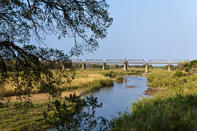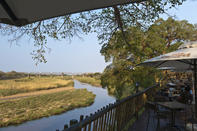A Line Along the Selati River
In 1890, while the Eastern Railway Line was being built, a member of the Volksraad introduced a petition from the Soutpansberg district requesting the construction of a branch line from Komatipoort to the rich farmlands of the north-eastern Transvaal.

This railway was to run along the Selati River and would also service the booming goldfields around the Murchison range, based at the towns of Leydsdorp and Gravelotte. The concession to build and operate this line was awarded to a French entrepreneur named Eugene Oppenheim.
He had secured the contract with the help of thousands of pounds of bribes that were paid to various members of the Volksraad in exchange for their support. After several months of haggling, it was agreed that Oppenheim and his investors would put up about one-quarter of the two-million-pound construction budget and the Transvaal government would put up the rest.
A Controversial Affair
Work on the Selati Line began in 1892 and earthworks up to the Sabi River were completed by the middle of 1893. During this time, the Oppenheim consortium was busy with a number of fraudulent deals that made them huge profits at the expense of the Transvaal government.
Books were cooked, false expense claims were made and the company, based in Brussels, signed a bewildering series of agreements with subcontractors to obfuscate their financial mismanagement.
By 1895, however, the Selati scandal broke wide open when JS Smit (the government Railway Commissioner) began to investigate the whole controversial affair. Consequently, a series of legal suits and counter-suits were initiated by the Transvaal Government, the Oppenheim consortium, outraged shareholders and the Brussels authorities.
End of the Line
As a result, work on the Selati line was abruptly halted. Sub-contractors and labourers were cut loose in the Bushveld with no pay and they indignantly downed their tools and left. Hundreds of construction implements and stocks of building material were thus abandoned in the veld and this impromptu stockpile layed undisturbed for the next ten years.
At the end of the whole Selati affair, the Transvaal government was left with 120 km of useless track that ended in the middle of nowhere. Over one million pounds had disappeared into the pockets of unscrupulous businessmen and just about every politician in the Transvaal was revealed as greedy and corrupt. The Oppenheim brothers were sentenced to three years in a Brussels prison, but no action was taken against any members of the Volksraad who were complicit in the fraud.
The Zuid-Afrikaanse Republiek became the laughing stock of the financial community and it was said that you couldn’t find a single honest man in the whole of the Transvaal. But the Selati Line did eventually prove it’s worth.
The Selati Line

The Selati Line itself remained in regular use until the 1960s with as many as 250 trains a week shunting through the park. Obviously, many animals were taken out by the rolling stock and it was eventually decided to build a new line around the western edge of the reserve. The last train travelled through the reserve in September 1973.
Today, there are still several substantial relics of the railroad era standing in and around Skukuza rest camp. The Sabie railway bridge is clearly visible from the riverside promenade, often beautifully silhouetted against the bushveld sunrise, and then there’s the old Skukuza passenger halt, complete with an SA Railway Class 24 steam locomotive (#3638) that actually used to ply the Kruger route.
This is coupled to a wood-panelled lounge car that was released for use in 1929. There used to be two additional coaches, a dining car and kitchen car, but these were destroyed by a fire in 1995. Until recently, the carriages and platform were used as a restaurant but this facility is now dormant.
By David Fleminger Kruger Shalati Train on the Bridge offers unique luxury accommodation in a refurbished historic train stationed on the Selati Bridge 50 feet...
Kruger Shalati Train on the Bridge offers unique luxury accommodation in a refurbished historic train stationed on the Selati Bridge 50 feet...